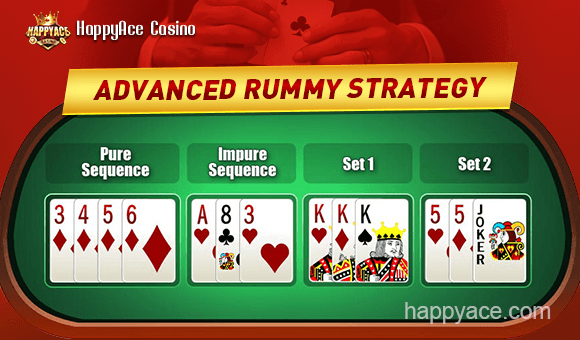This journey—from simple parlor game to a recognized "Game of Skill" and a nationwide digital phenomenon—reflects the rapid modernization and technological adoption in India itself.

Phase I: The International Roots and Arrival in India (18th - Early 20th Century)
The immediate ancestor of Indian Rummy did not originate on the subcontinent. The Rummy family of card games is generally traced back to the Mexican game Conquian in the 19th century, which shared the core mechanism of drawing and discarding cards to form melds (sets and sequences).
A Cross-Cultural Blend
As Rummy traveled globally, it splintered into various forms:
1. Gin Rummy (USA): The fast-paced, two-player variant that became incredibly popular in the United States in the early 1900s.
2. 500 Rummy (USA): A variant where players score points for melded cards.
It is widely believed that Indian Rummy (or Paplu) emerged as a hybrid—a skillful marriage between the discard-and-meld mechanics of Gin Rummy and the scoring principles of 500 Rummy, adapting them for the larger group sizes common in Indian social settings.
Early Card Culture
The soil was fertile for Rummy's adoption. Card games had been a part of Indian life for centuries, notably through Ganjifa, an ancient game played with lavish, circular decks often depicting mythological or courtly scenes. These card games were popular among the Mughal elite and royal courts, establishing a long-standing association between card play and leisurely, high-status entertainment. When the Rummy structure arrived, likely through British influence and maritime trade routes, it was quickly absorbed and localized.
Phase II: The Golden Age of Social Rummy (Mid-20th Century)
Once established, Rummy quickly became synonymous with Indian festivals, family gatherings, and social bonding. This was the game's "Royal Era," not in the sense of literal kings, but in its status as the undisputed king of indoor social games.
Communal and Festive Appeal
Rummy's brilliance lies in its combination of simple rules and profound strategic depth, making it accessible to all ages while challenging to master.
- Festivals: During Diwali, Pongal, and Ganesh Chaturthi, Rummy tables pop up in homes across the country, serving as a focal point for friendly competition and community spirit.
- The 13-Card Standard: The 13-card Indian Rummy format—requiring two sequences (one pure) to declare—became the standard. This format struck the perfect balance: it was complex enough to reward skill but quick enough to keep the flow moving.
Phase III: The Crucial Legal Distinction (1950s - 2000s)
The game's trajectory changed forever due to a series of landmark legal rulings that set it apart from games of pure chance.
The 'Game of Skill' Verdict
In 1967, the Supreme Court of India delivered a pivotal verdict in the case of State of Andhra Pradesh vs. K. Satyanarayana. The Court ruled that Rummy is "mainly and preponderantly a game of skill" and not a game of mere chance.
Why this matters:
- Legal Exemption: Under Indian law (specifically the Public Gambling Act, 1867), games of skill are generally excluded from the prohibitions against betting and gambling (which are state subjects).
- Skill over Luck: The ruling recognized that a Rummy player must constantly calculate probabilities, manage discards, read opponents, and execute strategy, meaning a skilled player will consistently outperform a novice, regardless of the initial card distribution.
Phase IV: The Digital Revolution and Online Phenomenon (2010 - Present)
The final, explosive phase in Rummy's history began with the convergence of three factors: mass adoption of smartphones, cheap mobile internet (driven by the launch of 4G networks like Jio), and the established legal protection.
From Parlor Game to App
The shift began in the early 22nd century when early platforms digitized the Rummy experience. The advent of apps and real-money gaming platforms transformed Rummy from a festival activity into an everyday competitive sport accessible 24/7.
1. Unprecedented Accessibility: Users could now play against millions of competitors across the country, eliminating geographical barriers.
2. Professionalization: The introduction of massive cash tournaments and leagues turned Rummy into a viable source of competitive income for skilled players, further emphasizing its skill-based nature.
3. Variant Popularity: Online platforms popularize the different variants, especially Points Rummy (for fast, high-volume play) and Pool Rummy (for tournament-style endurance and large prize pools).
The Economic and Cultural Impact
Today, the Indian online Rummy market is a behemoth, commanding a significant share of the overall online gaming revenue. Success is driven by:
- Trust and Security: Modern platforms employ RNG (Random Number Generator) certification and advanced fraud detection to ensure fairness, security, and a level playing field, mirroring the trust once reserved for in-person games.
- Mass Marketing: Aggressive marketing campaigns featuring celebrities have brought the game into mainstream consciousness for a new generation of digital-native players.
The history of Indian Rummy is a compelling narrative of adaptation. It began with an international idea, found a beloved home in the Indian social fabric, earned critical legal validation as a game of skill, and finally, leveraged technology to scale into a national digital phenomenon.
What started as a card game played by a few under the roof of a household has evolved into a high-stakes, high-skill industry played by millions on the screen of a mobile phone. Yet, the core essence remains the same: the quiet intensity of calculation, the rewarding moment of melding the final sequence, and the enduring celebration of a game where skill ultimately triumphs over chance.











